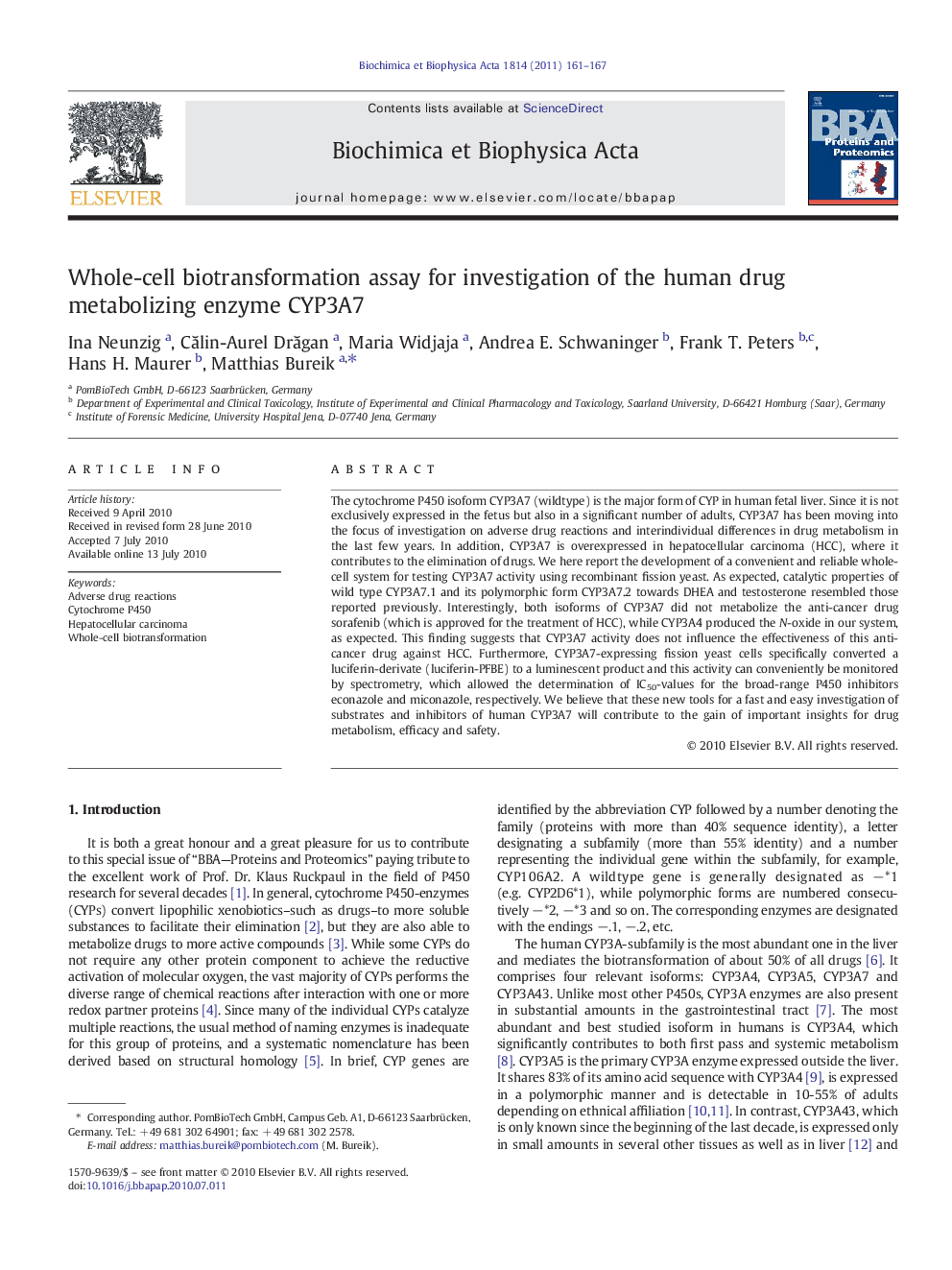| Article ID | Journal | Published Year | Pages | File Type |
|---|---|---|---|---|
| 1178794 | Biochimica et Biophysica Acta (BBA) - Proteins and Proteomics | 2011 | 7 Pages |
The cytochrome P450 isoform CYP3A7 (wildtype) is the major form of CYP in human fetal liver. Since it is not exclusively expressed in the fetus but also in a significant number of adults, CYP3A7 has been moving into the focus of investigation on adverse drug reactions and interindividual differences in drug metabolism in the last few years. In addition, CYP3A7 is overexpressed in hepatocellular carcinoma (HCC), where it contributes to the elimination of drugs. We here report the development of a convenient and reliable whole-cell system for testing CYP3A7 activity using recombinant fission yeast. As expected, catalytic properties of wild type CYP3A7.1 and its polymorphic form CYP3A7.2 towards DHEA and testosterone resembled those reported previously. Interestingly, both isoforms of CYP3A7 did not metabolize the anti-cancer drug sorafenib (which is approved for the treatment of HCC), while CYP3A4 produced the N-oxide in our system, as expected. This finding suggests that CYP3A7 activity does not influence the effectiveness of this anti-cancer drug against HCC. Furthermore, CYP3A7-expressing fission yeast cells specifically converted a luciferin-derivate (luciferin-PFBE) to a luminescent product and this activity can conveniently be monitored by spectrometry, which allowed the determination of IC50-values for the broad-range P450 inhibitors econazole and miconazole, respectively. We believe that these new tools for a fast and easy investigation of substrates and inhibitors of human CYP3A7 will contribute to the gain of important insights for drug metabolism, efficacy and safety.
